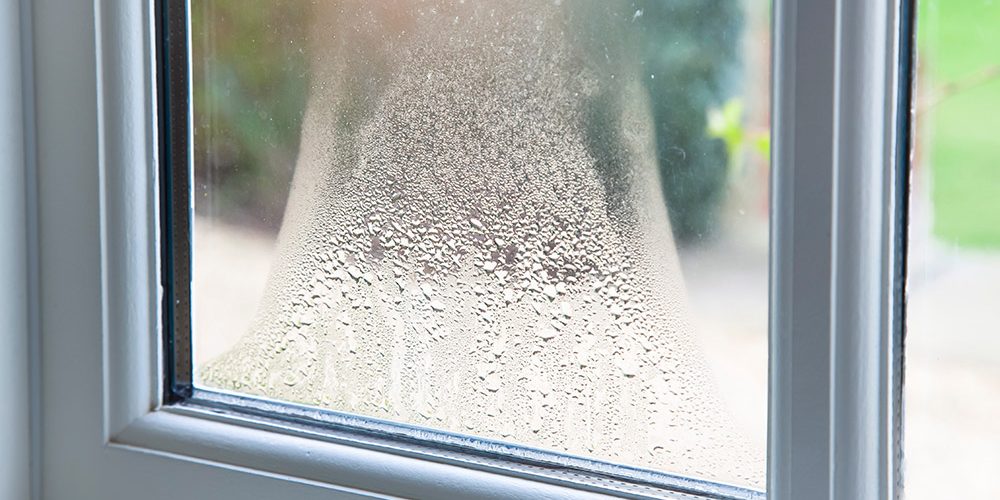As the autumn months begin and with winter on the horizon, keeping private rental properties free of condensation, damp, and mould will be on the mind of every landlord. With recent changes to legislation, a range of potential issues to keep an eye on, and pressure to protect your investment from damage, this can be a stressful process. We have put together a helpful guide so that you can stay informed and know the best course of action to take.
What causes damp, condensation, and mould?
Mould is often the result of condensation. Condensation is when water in the air settles on a cold surface and returns to liquid state, creating damp patches of stagnant moisture around a property. There are a number of potential causes, some that are due to flaws in the property which have typically been the responsibility of the landlord, and others that until recent guidance changes would’ve been considered ‘lifestyle choices’ by tenants and were their responsibilities to rectify.
-
Structural problems
Sometimes an issue with the property itself is the reason that it is experiencing problems. Damp can rise from the foundations and affect floor timbers, penetrate from a hole in the roof or the wall material, or be the result of leaks from faulty plumbing. These issues are typically the responsibility of the landlord, as they have a broader obligation to keep the property well-maintained.
-
Blocked ventilation
A major cause for condensation, damp, mould, and other unpleasant build-ups of moisture is inadequate, damaged, or blocked ventilation. Sometimes, this is the responsibility of the landlord, who is expected to take action to ensure that the property is safe to inhabit. However, tenants also cause issues by blocking trickle vents or airbricks, overfilling rooms with too much heavy furniture, and not creating adequate airflow through the property.
-
Excess moisture
Build-ups of excess moisture are commonly considered a result of tenant action. Overuse of hot water in bathrooms creates steam. Boiling water on the hob too often will also see condensation build up in kitchens, which commonly have lots of appliances and cupboards for moisture to become trapped behind to generate mould. Drying clothes on radiators or over electric heaters can result in excess moisture circulating in the air.
Changes to legislation
In July 2023, new legislation was passed concerning condensation in social housing. The Social Housing (Regulation) Act 2023 was introduced following the death of two-year-old Awaab Ishak in December 2020 because of health problems brought on by black mould in his home. While this legislation largely affects social housing, new guidance was published in September 2023:
“Damp and mould in the home are not the result of [tenant] ‘lifestyle choices’, and it is the responsibility of landlords to identify and address the underlying causes of the problem, such as structural issues or inadequate ventilation.”
This makes the prevention of condensation and mould the responsibility of landlords even in the private sector. It should be noted that while this is not primary or secondary legislation, as guidance it should still be adhered to and will be considered in legal disputes between landlords and tenants concerning condensation and mould. The changes mean that resolving causes of condensation that may typically have been attributed to tenants now lie with you as the landlord. You will need to conduct further monitoring and communication to ensure that the property is safe to inhabit.
What can you do to reduce condensation in your private rental property?
Trying to prevent condensation and the problems it brings can seem like a no-win scenario under the new guidelines. Even when doing everything in your power to keep the property safe and within regulations, you can still be held responsible for what tenants are doing to it. You can help keep your property comfortable and stop mould and condensation issues from snowballing by engaging the services of a professional letting agent from Pure Lettings.
Your dedicated agent will conduct regular property inspections to ensure that tenants are taking the right steps to prevent build-ups of condensation. They’ll have the time to complete a thorough examination and possess the knowledge and experience to quickly identify problems. If they spot something wrong, they will communicate clearly with tenants and provide resources to help them take the rights steps to resolve the issue. After this, they will complete as many follow-up visits as necessary at appropriate intervals to ensure that these steps have been carried out, and that the condensation is no longer present.
Having an expert on your side will be invaluable to reaching a resolution with your tenants that ensures your property is safe, legally compliant, and comfortable. They can also help reduce the chance of condensation damage to your property or mould-related health issues in your tenants. To find out more about how Pure Lettings can help you with inspections, tenant relations, and all your property management needs, get in touch. You can reach the team on 01689 400100 or by sending an email to info@pure-lettings.co.uk.
